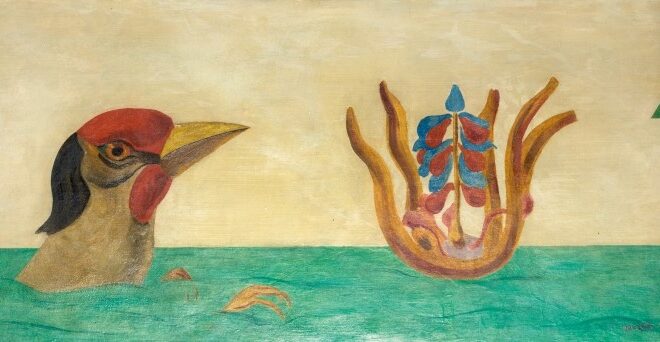Victor Vasarely, leader of the Op art movement
Prof. Francesco Carelli


Victor Vasarely (1906 – 1997) was a Hungarian-French artist, who is widely accepted as a “grandfather” and leader of the Op art movement. His work titled Zebra, created in 1937, is considered by some to be one of the earliest examples of Op art.
Vasarely became a graphic designer and a poster artist during the 1930s combining patterns and organic images. . Over the next three decades, Vasarely developed his style of geometric abstract art, working in various materials but using a minimal number of forms and colours:
• 1929–1944: Early graphics: Vasarely experimented with textural effects, perspective, shadow, and light. His early graphic period resulted in works such as Zebras (1937), Chess Board (1935), and Girl-power (1934).
• 1944–1947: Les Fausses Routes – On the wrong track: During this period, Vasarely experimented with cubistic, futuristic, expressionistic, symbolistic and surrealistic paintings without developing a unique style. Afterwards, he said he was on the wrong track. Writing the introduction to a catalogue, Jacques Prévert placed Vasarely among the surrealists. Prévert creates the term imaginaries (images + noir, black) to describe the paintings. Self Portrait (1941) and The Blind Man (1946) are associated with this period.
• 1947–1951: Developing geometric abstract art (optical art): Finally, Vasarely found his own style. The overlapping developments are named after their geographical heritage. Denfert refers to the works influenced by the white tiled walls of the Paris Denfert – Rochereau metro station. Ellipsoid pebbles and shells found during a vacation in 1947 at the Breton coast at Belle Île inspired him to the Belles-Isles works. Since 1948, Vasarely usually spent his summer months in Gordes in Provence-Alpes-Côte d’Azur. There, the cubic houses led him to the composition of the group of works labelled Gordes/Cristal. He worked on the problem of empty and filled spaces on a flat surface as well as the stereoscopic view.
• 1951–1955: Kinetic images, black-white photographies: From his Gordes works he developed his kinematic images, superimposed acrylic glass panes create dynamic, moving impressions depending on the viewpoint. In the black-white period he combined the frames into a single pane by transposing photographies in two colors. Tribute to Malevitch, a ceramic wall picture of 100 m2 (1,100 sq ft) adorns the University of Caracas, Venezuela which he co-designed in 1954 with the architect Carlos Raúl Villanueva, is a major work of this period. Kinetic art flourished and works by Vasarely, Calder, Duchamp, Man Ray, Soto, Tinguely were exhibited at the Denise René gallery under the title Le Mouvement (the motion). Vasarely published his Yellow Manifest. Building on the research of constructivist and Bauhaus pioneers, he postulated that visual kinetics (plastique cinétique) relied on the perception of the viewer who is considered the sole creator, playing with optical illusions.
• 1965–: Hommage à l’hexagone, Vega: The Tribute to the hexagon series consists of endless transformations of indentations and relief adding color variations, creating a perpetual mobile of optical illusion. In 1965 Vasarely was included in the Museum of Modern Art exhibition The Responsive Eye, created under the direction of William C. Seitz. His Vega series plays with spherical swelling grids creating an optical illusion of volume.
.




